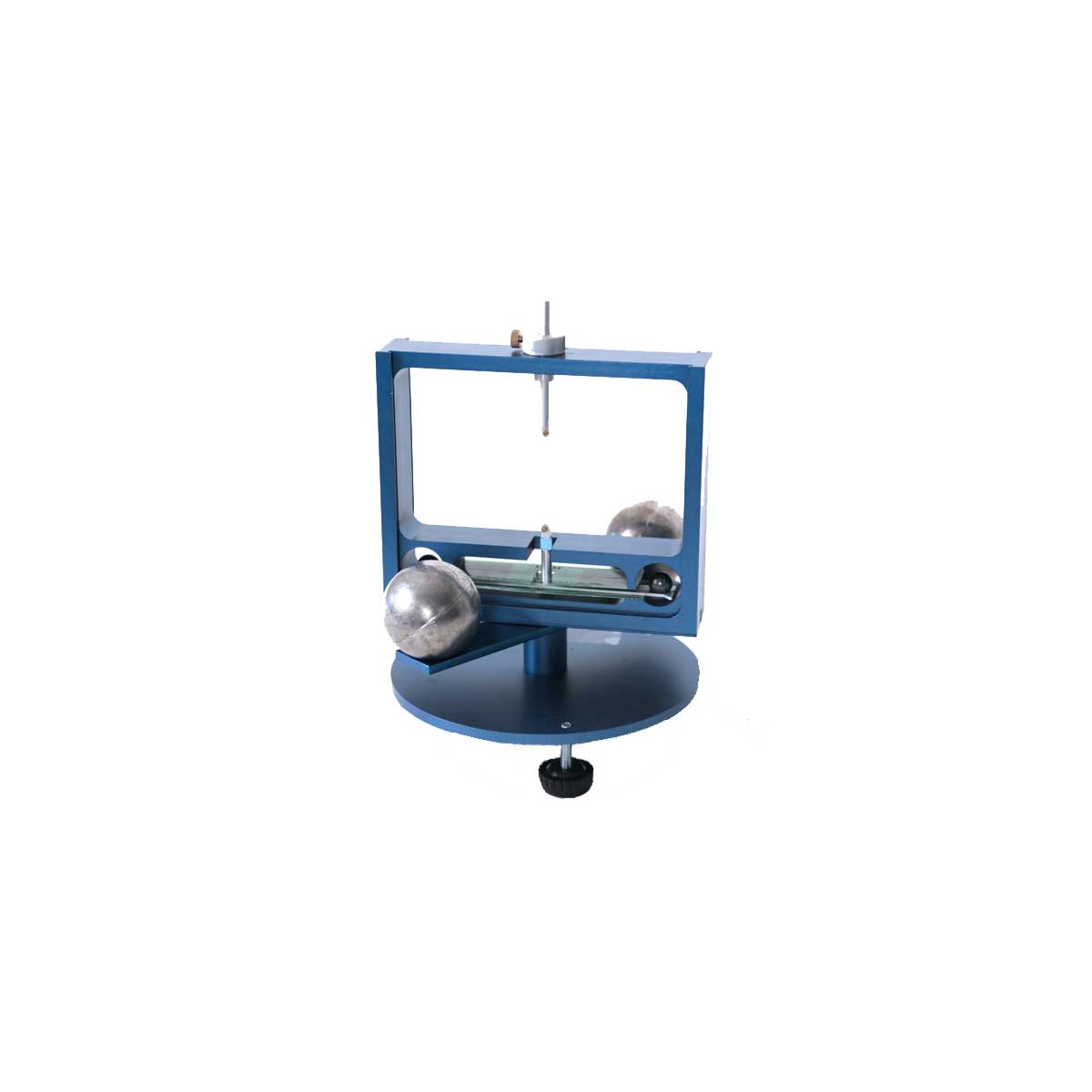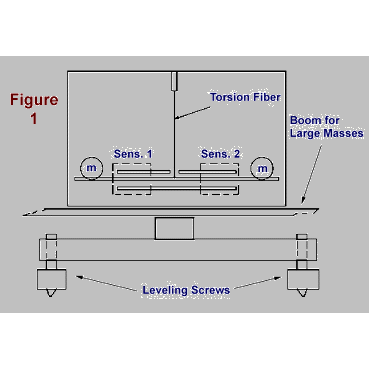Cavendish Balance


Cavendish Balance
TEL-RP2111
Limit the frustration involved in performing this classic experiment. The small size, short period, and digital sensor make setup easy.
Get 10% accurate results in a single lab period.
No more optical lever jitters due to revolutionary SDC sensor technology.
Short oscillation periods of 2-4 minutes.
Software to record data included with each unit.
Perfect for advanced undergraduate laboratory classes in mechanics.
You can now eliminate most of the frustrations and aggravation in performing this historic experiment with this new cutting edge technology developed and patented by Dr. Randall Peters. (Click here for a detailed explanation of these unique sensors.) The use of this simple device to measure the gravitational constant G (in a single lab period!) will impress your students in a way no textbook or even video can match.
TEL-RP2111
Limit the frustration involved in performing this classic experiment. The small size, short period, and digital sensor make setup easy.
Get 10% accurate results in a single lab period.
No more optical lever jitters due to revolutionary SDC sensor technology.
Short oscillation periods of 2-4 minutes.
Software to record data included with each unit.
Perfect for advanced undergraduate laboratory classes in mechanics.
You can now eliminate most of the frustrations and aggravation in performing this historic experiment with this new cutting edge technology developed and patented by Dr. Randall Peters. (Click here for a detailed explanation of these unique sensors.) The use of this simple device to measure the gravitational constant G (in a single lab period!) will impress your students in a way no textbook or even video can match.
The Cavendish Unit is essentially a torsion pendulum in which two 15g lead balls on the end of a light weight aluminum "boom", is suspended in the center by a 25 micron diameter adjustable length tungsten wire. The typical period is 2-4 minutes. This "boom" is mounted inside an aluminum draft proof case that allows a pair of 1Kg lead balls (the attracting masses) to be swiveled. Additionally, the boom is suspended between the capacitor plates of the SDC transducer which is mounted in the aluminum case. The transducer comprises two sensors to eliminate noise due to pendulous motion.
The transducer output is proportional to the angular movement of the boom and has a resolution on the order of 25 microradians. This unique and patented transducer design measures only the rotational motion and minimizes the unwanted pendulous component of motion. A small mirror is mounted on the boom for calibrating the unit and for for measurements for those who want to use an optical lever arrangement.
Software is now included with each Computerized Cavendish Balance. A USB cable (included) is connected to a PC. Data can be collected in either a continuous or single pass mode at rates of 10, 5, 2, 1, or 0.5 samples/second. The number of data points displayed varies from 512 up to 32,768. Data can be saved or exported to a spreadsheet for further analysis. With the new AD7745 the output is read directly in milliradians. The user can adjust the screen to easily see the position of the boom even at very small amplitudes.
The unit comes complete with four lead balls, a calibration pin, five feet of extra 25µm tungsten wire, a manual (on CD) which describes how to use the unit, and software, with instructions, for collecting data.
25 ft Extra Tungsten wire available, TEL-RP2111W - $25.00.
